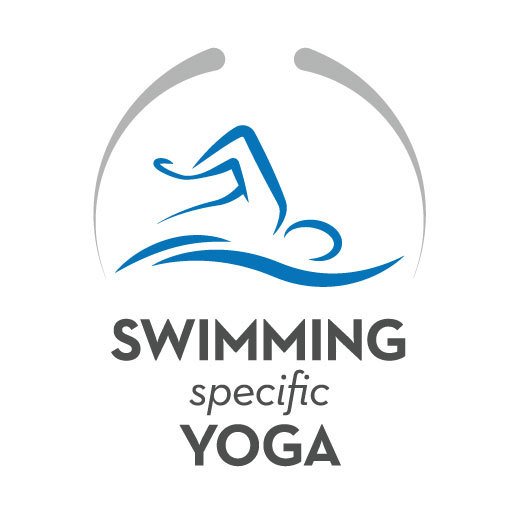You can train hard, you can train fast, you can do everything right in your preparation leading up to a swim meet, but if you are not dialed in when it is time to race it may be all for naught.
Yoga can be a powerful part of a pre-race routine that can set you up for a great performance.
Here are three ways you can use yoga before a race.
1. Breathing
In all activities of life from trivial to important the secret of efficiency
lies in an ability to combine two seemingly incompatible states – a state of
maximum activity and a state of maximum relaxation.— Aldous Huxley
For an athlete to perform at their best they need to have a balance between activation and relaxation. This balance is different for each individual, but whatever mix is right for you breathing can help you achieve that state.
Certain types of breathing can create a greater amount of relaxation or activation.
Types of breathing:
- 3-Part Breath
- This breath starts at the belly (part 1) then moves to the diaphragm (part 2) and then into the chest (part 3). The exhale follows the same pattern but in reverse the chest lowers, the ribs soften and the belly drops. This type of breath will promote relaxation and reduce anxiety.
- 3-Dimensional Breath
- This breath focuses on breathing into the front of the body, the sides of the body and the back of the body. You first breath deeply into the front of the ribs, then the sides of the ribs and then into the back feeling each area expand fully. On the exhale you can have the same rhythm or length of breath or you can exhale strongly focusing on releasing tension in the body. This type of breath will promote relaxation and reduce anxiety.
- Breath of Fire
- Take two or three deep breaths to prepare for the breath of fire. Start by inhaling through your nose filling your lungs to about half their capacity. Next exhale and inhale sharply through the nose in an action that resembles sniffing. The focus should be on the breath coming from your abdomen. This type of breath will promote greater activation in both the body and the mind.
*The first two types of breathing are simple and can be done with little practice. The breath of fire should be practiced a number of times before using it at a competition.
2. Visualization
Through practicing yoga you can develop tremendous visualization skills.
I am not talking about rose petals or fluffy clouds, but visualization skills that can help your swimming.
When you place attention on your breath it creates greater focus and concentration.
You can use the time spent at the start of a yoga practice to visualize how your body will move during the session or how your body moves in the water. The key is that you are preparing for movement, so visualize movement.
You can also use the time at the end of the practice before going into relaxation to visual a race or parts of a race.
You can revisit this visualization before your races. By using breath to refine your focus you can visualize your performance, which is a strategy that we know as swimmers and coaches, if used properly, works.
3. Activation
There are some very simple dynamic yoga poses that can be used to help activate your body before you go behind the blocks.
Since these exercises are done with a focus on breath it reinforces and creates a feeling of ‘effortless effort’ or ‘easy speed’ which is perfect preparation for a race.
These poses will also create a better sense of body awareness.
Two poses you can use:
Sunbird
Start in a table top position (on hands and knees) have a focus on a neutral spine and stability through the core (belly button and ribs towards the spine, spine towards the belly button and ribs). From that point on an inhale bring the right leg up behind you and the left arm up in front of you.
At this point you can do a couple of different things:
- On an exhale bring your knee towards your elbow and your elbow towards your knee while at the same time rounding the back and dropping the chin. On the inhale extend out again with keeping the core engaged.
- Inhale externally rotate the leg at the hip and the arm at the shoulder on and exhale externally rotate the leg and arm. Ensure that you are moving smoothly through the joints.
Flying Pigeon
This pose starts in a down dog position. Before lifting your leg ensure that your shoulders are externally rotated and stable. On an inhale lift the left leg off the ground (pigeon prep) on the exhale bring the left knee in towards the nose. You can do this at a fast pace or slow pace.
Do 5-10 on each leg ensuring that you are focusing on shoulder stability and core control.
…
This Yoga for Swimmers article is brought to you by Swimming Specific Yoga the world’s top resource for online yoga classes and courses designed for swimmers.
Sign up here to receive the Swimming Specific Yoga newsletter which includes information on how yoga can enhance both your swimming performance and your wellness.





I wish USS would hire Jeff Grace to teach our elite young swimmers how to use yogic breathing techniques to improve their mental focus. It could be particularly beneficial for those athletes who have trouble controlling pre-race nerve; but in my opinion, yoga techniques should be taught in physical education programs throughout the US because they have so many health benefits.
My only response to the above headlining photo is ouch! Happy St. Patrick’s Day!